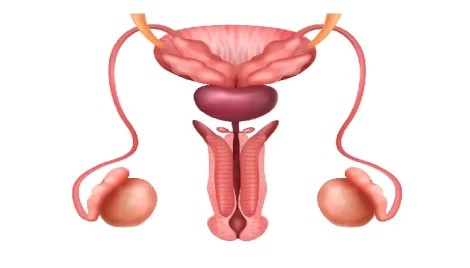
Penile Curvature and Peyronie’s Disease
Home Penile Curvature and Peyronie’s Disease


Home Penile Curvature and Peyronie’s Disease

Penile curvature is a condition in which the penis bends abnormally when erect. While a slight curvature is common and usually harmless, a significant bend—especially one that causes pain or sexual dysfunction—may indicate an underlying condition known as Peyronie’s Disease. This condition can be physically and psychologically distressing for men, affecting both self-esteem and intimate relationships.
What Is Penile Curvature?
Most men have some degree of penile curvature during an erection. This is normal and generally does not interfere with sexual activity. However, when the curvature becomes severe—bending sharply upward, downward, or to the side—it can cause pain, difficulty with penetration, or emotional distress.
It causes pain during erections
It interferes with sexual intercourse
It leads to psychological issues such as anxiety or depression
It is associated with a palpable lump or plaque under the penile skin
Affects approximately 1 in 10 men, though the real incidence may be higher due to underreporting.
Most common in men aged 40 to 70.
Can occur at any age, including younger men (known as early-onset Peyronie’s disease).
The most widely accepted cause of Peyronie’s disease is repeated microtrauma to the penis during sexual intercourse or physical activity. This trauma leads to localized bleeding and inflammation, triggering abnormal wound healing and scar tissue formation.
Some men may have a genetic susceptibility to abnormal scar tissue formation. Peyronie’s disease is sometimes found in families and is associated with other fibrotic conditions like Dupuytren’s contracture (a hand condition).
Some experts believe Peyronie’s may involve an autoimmune process, where the body attacks its own tissue following injury.
Men with conditions such as diabetes, high blood pressure, and atherosclerosis are at increased risk due to compromised blood flow and impaired healing.
Smoking
Excessive alcohol consumption
Obesity
Sedentary lifestyle
Painful erections
Noticeable curvature during erection
Development of penile plaques (hard lumps)
Shortening of the penis
Erectile dysfunction (ED)
Pain usually subsides
Curvature stabilizes
Plaques become firm
Erectile dysfunction may persist or worsen
Penile pain (especially during erection)
Visible bend in the erect penis
Lumps or hard areas under the skin
Difficulty with sexual intercourse
Psychological distress (depression, anxiety, relationship problems)
The urologist will ask about:
Duration and progression of symptoms
Pain level during erections
Erectile function
History of penile trauma
Impact on sexual activity
Palpation of penile shaft for plaques or lumps
Assessment of curvature
Measurement of penile length
To assess curvature and plaque location more accurately:
Intracavernosal injection of a medication (e.g., prostaglandin E1) may be used to induce an erection.
Penile ultrasound to measure plaque and evaluate blood flow.
Used to:
Confirm plaque location and size
Assess blood flow in the penile arteries
Check for calcification within the plaque
Congenital penile curvature (present from birth)
Penile fracture (acute injury with hematoma)
Penile cancer (rare, but serious)
Lichen sclerosus (skin condition)
For mild cases without pain or erectile dysfunction:
Monitoring the progression
Lifestyle modification
Managing psychological impact
No oral therapy has been proven universally effective, but some may help in the early phase:
Vitamin E: Antioxidant properties, limited benefit
Potassium para-aminobenzoate (Potaba): Anti-inflammatory
Colchicine: Reduces inflammation
Pentoxifylline: May help reduce plaque calcification
Tamoxifen: Anti-fibrotic effects
Note: Effectiveness of oral treatments is variable and often limited.
Injections directly into the plaque are more effective than oral medications.
Collagenase Clostridium Histolyticum (Xiaflex): FDA-approved; breaks down collagen in plaques
Verapamil: Calcium channel blocker; reduces inflammation and plaque size
Interferon-alpha 2b: Reduces fibroblast activity and plaque formation
Low-intensity extracorporeal shockwave therapy (LiESWT) is being studied for:
Pain relief
Possible plaque softening
Results are mixed, and this treatment is considered experimental.
Penile traction therapy (PTT) involves wearing a device for several hours daily.
Can reduce curvature
May restore length
Best when used in early stages or post-surgery
Curvature is severe (>30 degrees)
Erectile dysfunction persists
Non-surgical options have failed
The disease has stabilized (usually after 12 months)
Shortens the longer (non-affected) side of the penis
Effective in mild to moderate curvature
Results in penile shortening
For more severe curvatures
Involves cutting or removing part of the plaque and replacing it with a graft
Preserves length but carries risk of erectile dysfunction
For men with severe Peyronie’s disease and ED
Inflatable or malleable implants
Can straighten the penis and restore rigidity
Get details in your inbox right now


D 9/90-Opposite Swaminarayan mandir gate no-1, Chitrakoot, Vaishali Nagar, Jaipur, Rajasthan 302021.
Customer Support
+91 82398 88451Drop Us an Email
info@drarjunsinghshekhawat.com
© 2025 Dr. Arjun Singh Shekhawat, All Rights Reserved.